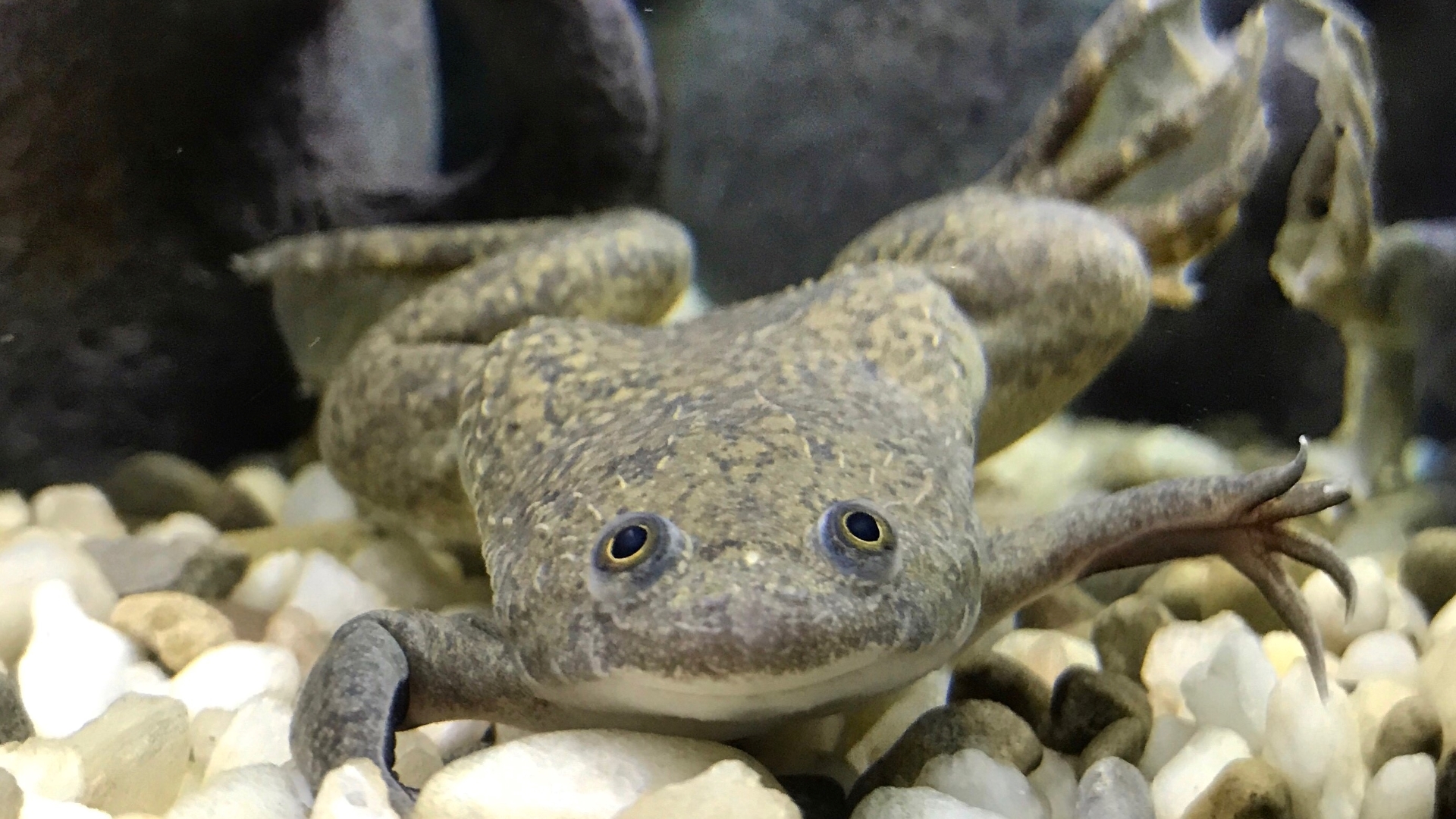Frogs regrow amputated legs in breakthrough experiment
Frogs can't naturally regrow their legs, but a drug cocktail did the trick.

Scientists have regrown frogs' amputated legs after giving them a "cocktail" of drugs encased in a silicon stump.
African clawed frogs (Xenopus laevis) are like humans in that they can't naturally regrow lost limbs. In the new study, researchers successfully coaxed the frogs to grow replacement limbs in 18 months following a treatment that lasted just 24 hours. While there's a massive difference between frogs and humans, the finding raises the possibility that in the future, humans could also regrow limbs.
"It's exciting to see that the drugs we selected were helping to create an almost complete limb," first author Nirosha Murugan, a research affiliate at Tufts University in Massachusetts, said in a statement. "The fact that it required only a brief exposure to the drugs to set in motion a months-long regeneration process suggests that frogs and perhaps other animals may have dormant regenerative capabilities that can be triggered into action."
Related: 13 extremely strange animal feet
Animals have natural abilities to regenerate themselves. For example, human bodies close open wounds and can even use stem cells to regrow parts of the liver. Some animals, such as salamanders, can regrow whole limbs and other missing parts. The mechanisms behind limb regeneration are not fully understood, but neither humans nor adult frogs are capable of regrowing legs and arms, perhaps because those limbs are so complex.
Both humans and frogs cover an open amputation wound in scar tissue to stop further blood loss and infection. Humans have developed prosthetic replacement limbs but scientists have been unable to recover or reverse the loss of a major limb like an arm or leg.
The latest research used multiple drugs to regenerate lost limb tissue. The team surgically amputated frogs' legs and then applied a silicone cap they called a "BioDome" to each frog's wound. The cap released a cocktail of five drugs, including growth hormones, that perfomed different roles, such as encouraging nerves and muscles to grow. One of the drugs also prevented the frogs' bodies from producing collagen, which normally causes wounds to scar over.
Sign up for the Live Science daily newsletter now
Get the world’s most fascinating discoveries delivered straight to your inbox.
"Using the BioDome cap in the first 24 hours helps mimic an amniotic-like environment, which, along with the right drugs, allows the rebuilding process to proceed without the interference of scar tissue," co-author David Kaplan, a professor of engineering at Tufts University, said in the statement.
Embryos and fetuses develop in an amniotic sac during pregnancy. The team was able to trigger some of the same molecular pathways in the frogs that are used when an embryo is growing and taking shape.
The new legs looked similar to normal legs with similar bone structure, except for the toes, which lacked underlying bones. The frogs were able to use their new leg to swim like a regular leg.
The findings were published Jan. 26 in the journal Science Advances.
Originally published on Live Science.

Patrick Pester is the trending news writer at Live Science. His work has appeared on other science websites, such as BBC Science Focus and Scientific American. Patrick retrained as a journalist after spending his early career working in zoos and wildlife conservation. He was awarded the Master's Excellence Scholarship to study at Cardiff University where he completed a master's degree in international journalism. He also has a second master's degree in biodiversity, evolution and conservation in action from Middlesex University London. When he isn't writing news, Patrick investigates the sale of human remains.









